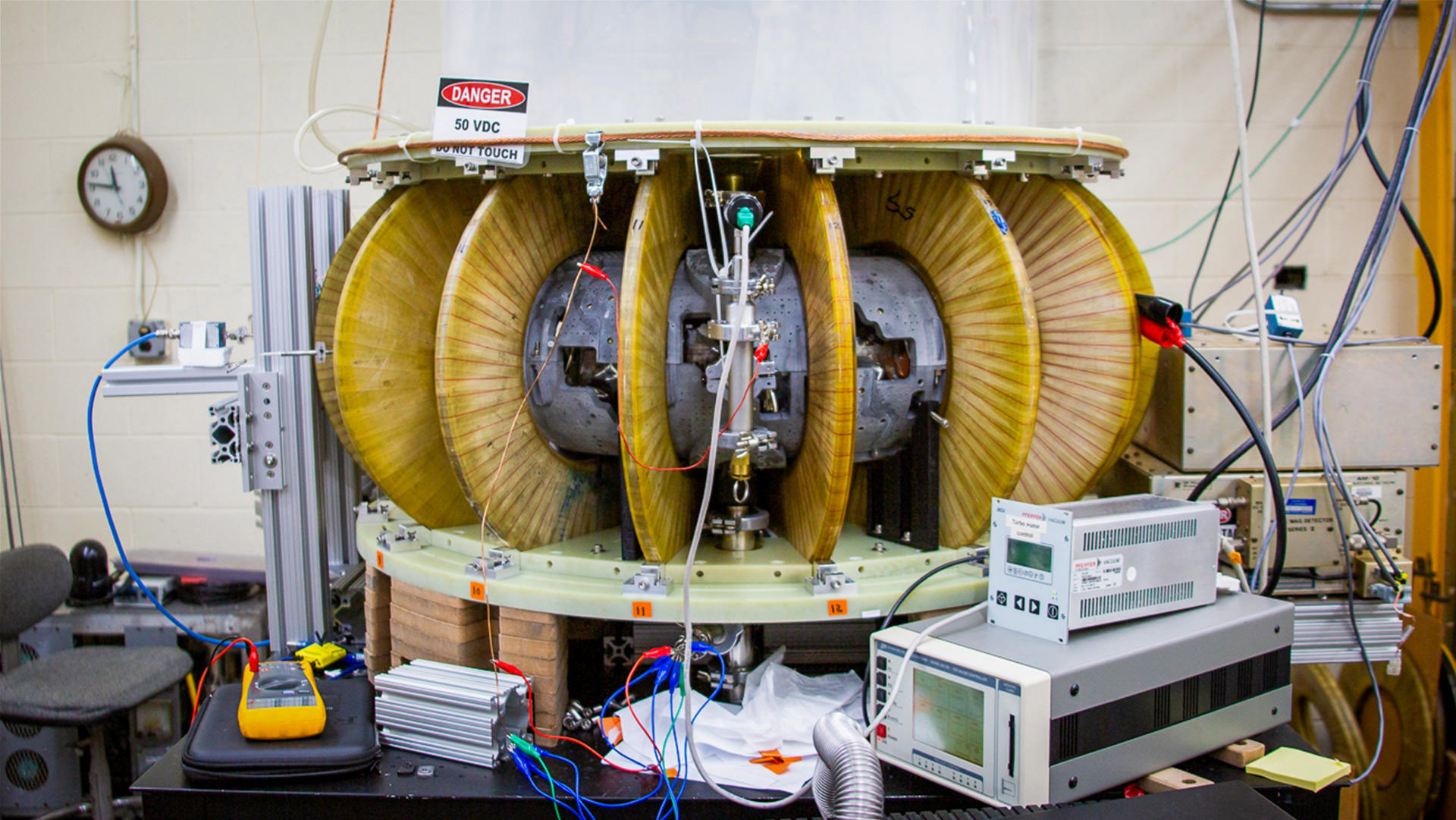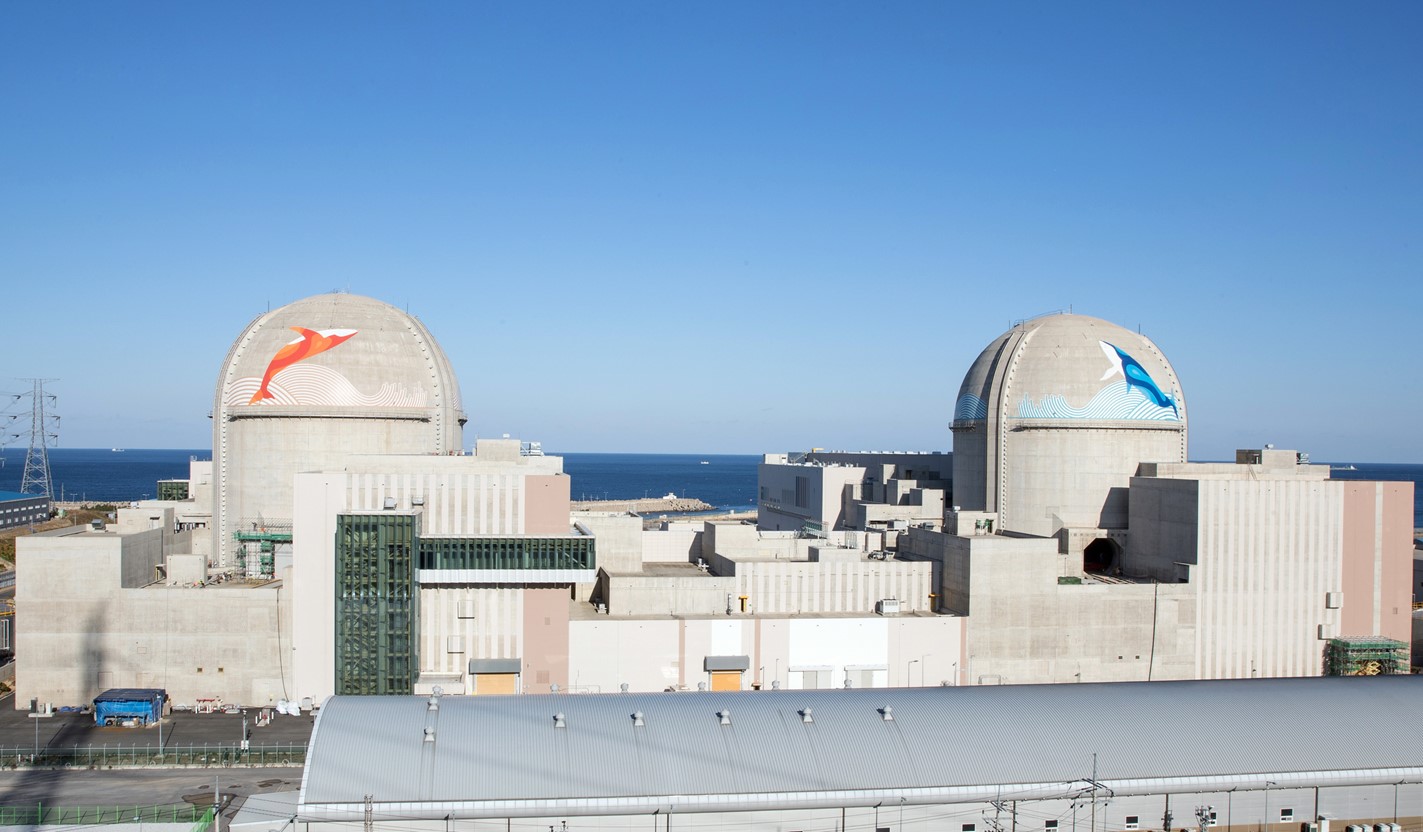TerraPower’s application for Natrium plant available online

TerraPower’s application to build its Natrium nuclear power plant near Kemmerer, Wyo., is available for public viewing on the Nuclear Regulatory Commission website.

A message from Goodway Technologies
Ensuring Safety and Cleanliness: The Crucial Role of Industrial Vacuums in Nuclear Power Facilities

TerraPower’s application to build its Natrium nuclear power plant near Kemmerer, Wyo., is available for public viewing on the Nuclear Regulatory Commission website.
Laser Photonics Corporation and Brokk Inc. have announced the forming of a technology partnership to bring laser cleaning and cutting technology to the nuclear disposal, decommissioning, mining, tunneling, construction, metal processing, and military industries.
Safety and security systems remain unharmed following drone attacks
The American Nuclear Society (ANS) condemns the recent drone attacks at Ukraine’s shutdown Zaporizhzhia Nuclear Power Plant (ZNPP) and supports the International Atomic Energy Agency (IAEA) Board of Governors in its continued call for an immediate removal of Russian military and personnel from ZNPP.

Imagine what our world would be like today without the benefits of electric energy. Think of the inventions and technologies that never would have been. Think of a world without power grids and the electricity that makes them run. Without this power, we’d find it difficult to maintain our industrial and manufacturing bases or enable advancements in the fields of medicine, communications, and computing.
Now consider the moon, our closest celestial neighbor about which we still know so little, waiting for modern-day explorers in spacesuits to unveil its secrets. Lunar exploration and a future lunar economy require reliable, long-lasting, clean sources of power. Nuclear fission answers that call. When assessing the application of nuclear power in space, three Ps should be considered: the present, the potential, and the partnerships.

The first unit at Akkuyu, Turkey’s first nuclear power plant, has begun the commissioning process. The goal is that the plant will begin supplying energy to the nation next year, according to Rosatom, Russia’s state atomic energy corporation.

Researchers at the Department of Energy’s Princeton Plasma Physics Laboratory are using a stellarator they designed and built using permanent rare-earth magnets and a 3D-printed shell to help test new fusion power concepts. MUSE—the first stellarator built at PPPL in 50 years—took one year to construct and generated its first plasma in February 2023. The work that went into its design has already inspired a stellarator power plant concept being developed by a commercial spin-off, Thea Energy.

Next-generation reactor company Oklo Inc. is teaming up with Diamondback Energy Inc. to bring Oklo’s Aurora Powerhouse units to the American Southwest.
The companies signed a nonbinding letter of intent (LOI) this week to collaborate on a 20-year power purchase agreement that would provide 50 MW of electricity per unit to Diamondback’s Permian Basin operations area. The agreement lays out options to renew and extend the agreement for an additional 20-year term, since the units are designed to operate for 40 years without needing to refuel. Diamondback is an independent oil and gas company headquartered in Texas.
As part of its DUF6 conversion program, the DOE is shipping converted depleted uranium oxide to WCS for disposal.
Last year in late August, 120 storage cylinders of depleted uranium oxide (DUOx) safely arrived by rail in West Texas, having been shipped from the Department of Energy’s Portsmouth Site in Ohio. It was the first such shipment of the stable crystalline powder from the Portsmouth Site and was another milestone in the DOE Office of Environmental Management’s (EM) efforts to ship DUOx for off-site disposal.

Unit 2 of South Korea’s Shin-Hanul nuclear power plant entered commercial operation on April 5, Korea Hydro & Nuclear Power announced. It is the nation’s 26th operating reactor, which continues the upward nuclear trend as South Korea reverses a previous phase-out plan for nuclear.
Energy secretary Jennifer Granholm submitted a Department of Energy report to the U.S. Congress on April 8 detailing the state of research reactors at U.S. universities and the potential need to upgrade or build additional reactors, including advanced nuclear reactors and test facilities.

Systems for Nuclear Auxiliary Power (SNAP) was an Atomic Energy Commission program with the goal of producing a portable and dependable power source centered around nuclear technology that could be utilized in land, sea, and space applications. The program aimed to provide a compact reactor—a necessity for space applications—and ran from 1955 until 1973, when it was discontinued.
To help expand access to clean nuclear energy, the Department of Energy announced it has awarded more than $19.1 million to support nuclear energy research and development, university nuclear infrastructure, and undergraduate and graduate education.
U.S.-based reactor company X-energy has partnered with Canadian power producer TransAlta Corp. to study the feasibility of deploying an advanced small modular reactor at a fossil fuel power plant site in Alberta.

Once used for applications in medicine, industry, and research, many countries now have legacy radium-226 sources, according to the International Atomic Energy Agency. With the support of the IAEA’s technical cooperation program, these disused sealed radioactive sources are being recovered, and countries are improving national capacities for their long-term management, including their potential reuse and recycling.
A new study by the Government Accountability Office researched potential impacts of climate change–related hazards on the U.S. nuclear fleet and found clear risks. In the report, which was released to the public last week, the GAO recommends that the Nuclear Regulatory Commission address these possible threats during the licensing process.

Charles Harper (seated) with son Jeff (right) and grandson Phillip (left). (Photo: Otis Waters)
Charles L. Harper understands disadvantage. It was his personal drive and love for learning that pushed him to leave inner-city Detroit, join the U.S. Navy, earn degrees in psychology from Wayne State University and the University of Detroit, and enjoy a successful career as a clinical psychologist. He served as a strong role model for his son Jeffrey, who is an entrepreneur and international energy executive.
The Harper men have many things in common. According to Jeffrey, “Both my dad and I share a common self-motivation and a love for learning, but the most critical thing we share is the continual quest for opportunity, which led us both to moments of predestination that changed our lives.” And now, in honor of his father, the younger Harper has used these qualities to found Charles Harper Charities (CHC) with the aim of introducing disadvantaged youth to the world of nuclear engineering.
One CHC offering helps rising high school seniors attend a summer program to prepare them for college and introduce them to nuclear engineering. This summer’s Nuclear Engineering Opportunity Program, which will be CHC’s inaugural course, will be held at the University of Michigan in conjunction with the Department of Nuclear Engineering and Radiological Sciences (NERS) and the College of Engineering’s Office of Culture, Community, and Equity. The monthlong residential course will host rising seniors from Detroit at no cost to them and will introduce them to STEM subjects and provide tours of nearby nuclear facilities.
A group of 29 nonproliferation supporters sent a letter to President Biden asking that he withhold federal support for a proposed pilot plant for recycling spent nuclear fuel to be built by the Wisconsin-based fusion tech company SHINE Technologies. The experts further asked that Biden “discourage” the Nuclear Regulatory Commission from licensing the plant, claiming it would extract enough weapons-grade plutonium to build 100 atomic bombs a year.

Ukraine’s Zaporizhzhia nuclear power plant lost the connection to its only remaining backup power line last Thursday amid renewed indications of military activity in the area, the International Atomic Energy Agency reported.

Beshear
Kentucky Gov. Andy Beshear vetoed legislation last week that would have supported a push to bring nuclear energy to the Bluegrass State.
The governor said his objection to Senate Bill 198 is due to how voting members for the Kentucky Nuclear Energy Development Authority would be selected—and that it is not a reflection on his views toward nuclear power. The bill as written would designate members of the board from the private sector, bypassing the appointment authority of the governor or other state constitutional officers.
“The legislature can’t just say, ’You in this position in the private sector and you in that position on a private sector association are automatically on a board,’ and then [be] given governing authority,” Beshear said at a news conference. “That’s not the way the executive branch works, not the way that the power can be delegated to carry out the law.”
The House Energy and Commerce Committee announced a public hearing on improving the U.S. management of spent nuclear fuel. The hearing, titled “American Nuclear Energy Expansion: Spent Fuel Policy and Innovation,” will be held on April 10 by the E&C Energy, Climate, and Grid Security Subcommittee.
The hearing will be livestreamed on the E&C Committee website.